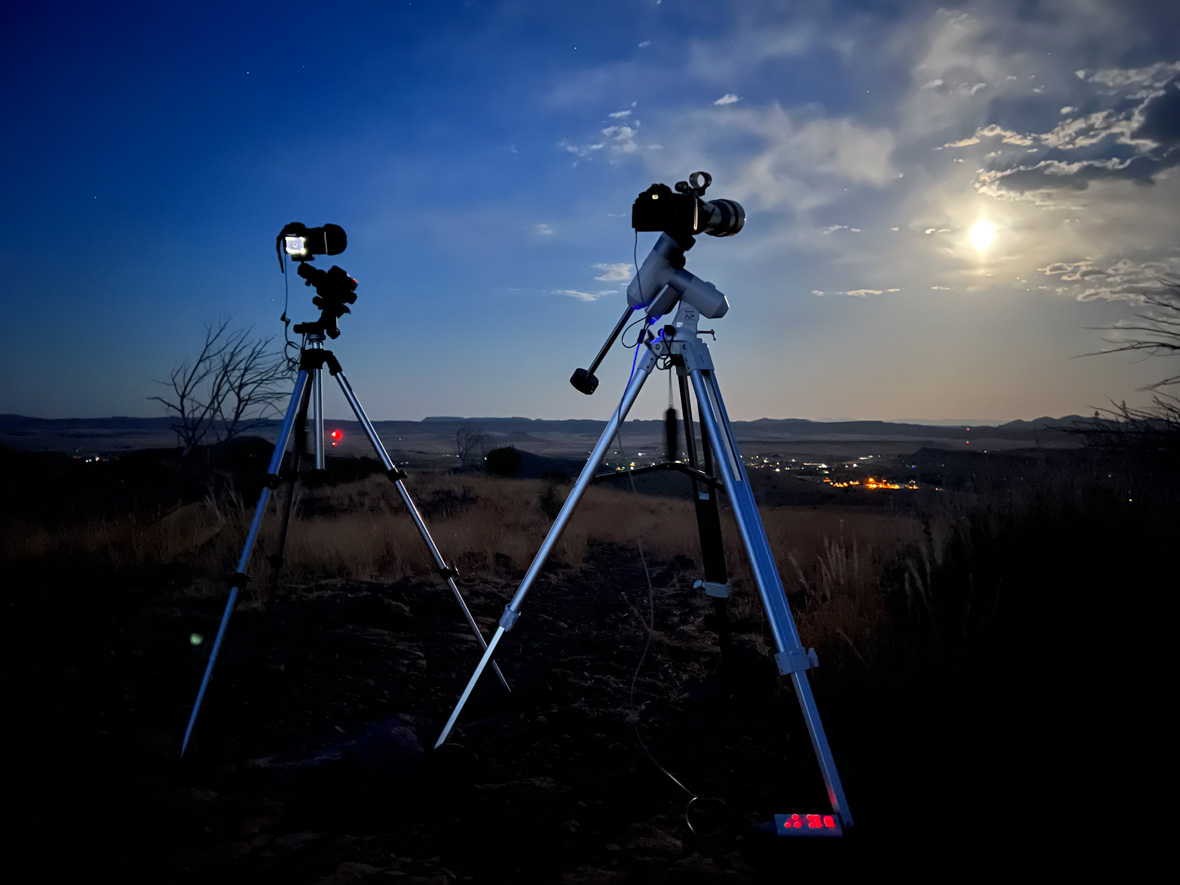
I started to set up for the lunar eclipse; it would occur tonight (this was not a drill)! But by the time I had the tripods and mount in place, I realized that I had left a critical piece of equipment behind—my camp chair. I left the stuff for a 10-minute trip back to the campsite to retrieve it.
On return, I found the other guy who had obtained a pass for the overlook (required if we wanted to stay past 10:00 pm). He was an interesting person who was ok with my being focused on setting up rather than chatting.
A few other visitors dropped by, including one who was on foot with some portable camera gear. After a while he decided he wanted a different viewpoint and so he hiked away, disappearing below the crest.
I was ready at moonrise. This time I could see the moon as it appeared on the horizon. I centered it in the cameras, started the tracking and started taking pictures. The moon rose in a light orange color, brightening to white and then about one-half hour later, the eclipse began.
At this point my cameras were on their own, needing only an occasional check to ensure that the tracking was on target and the moon was staying roughly centered. Unfortunately, clouds would interfere periodically all night.
I could now talk to the other eclipse photographer to find out that he was from Alpine, a town about 20 miles away. He had a tripod and a compact Nikon. And a cool camp chair that reclined in a way that made it easy to view the sky for watching meteors or for binocular viewing. He called it a “gravity chair”.
Eventually the eclipse reached totality. As it did, what had previously been a sky washed out by the brilliance of a full moon, now revealed the summer stars and constellations that had been hidden in the glare. But as I now recognized my old friends, I noticed they were out of place; some stars to the north were now hidden, while others to the south were new to me. But it was actually me that was out of place. I was 15 degrees farther south than my home in Minneapolis,
The tracking was better than I expected. In the nights before, I had levelled and polar aligned the mounts. I placed rocks around each tripod leg to indicate where it should be planted. I did not collapse the tripod legs in the intervening days, keeping them (at their unequal lengths) in order to recreate their positions tonight.
And it seemed to work! I made only a few adjustments to keep the moon centered over the five-plus hours of the eclipse.


Pingback: Texas Road Trip: Driving Adventures, Mistakes Made | Thor's Life-Notes
Pingback: Texas Road Trip: Reconnaissance Resumes | Thor's Life-Notes